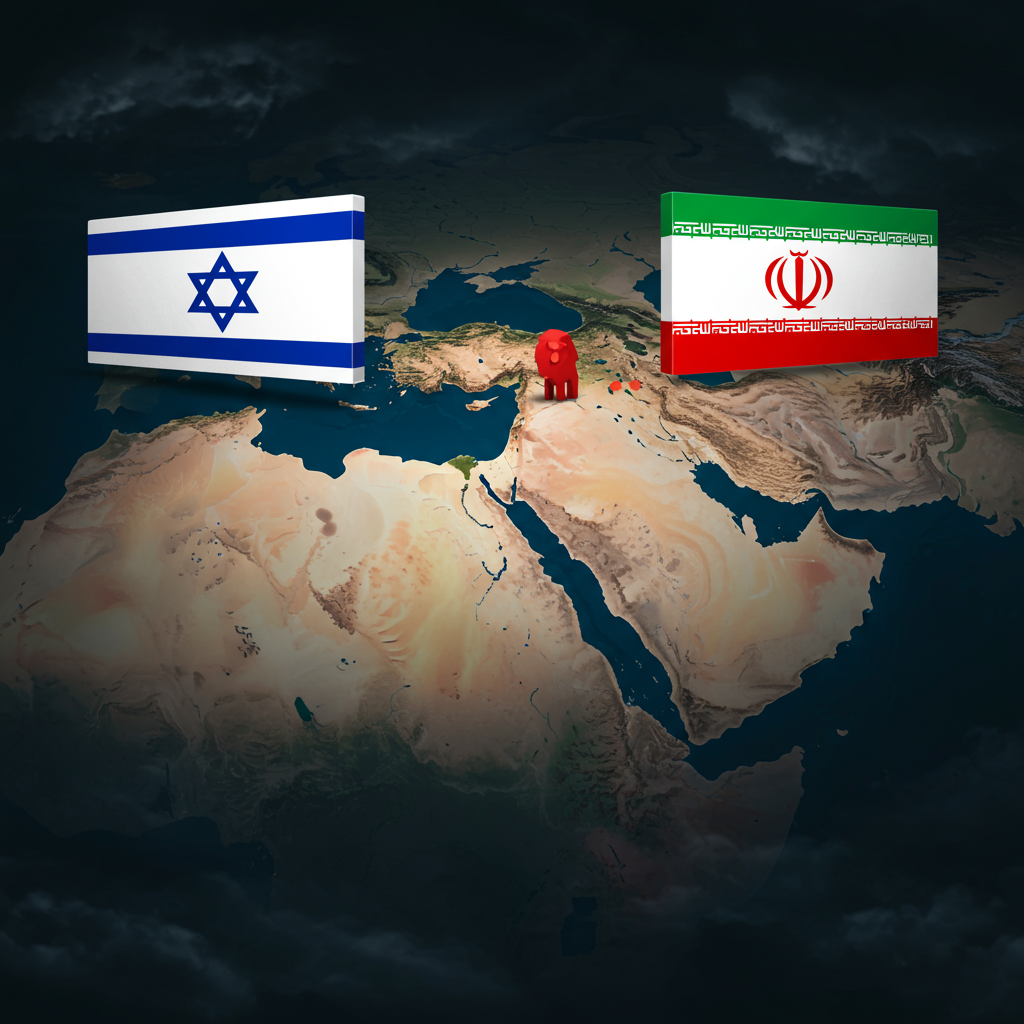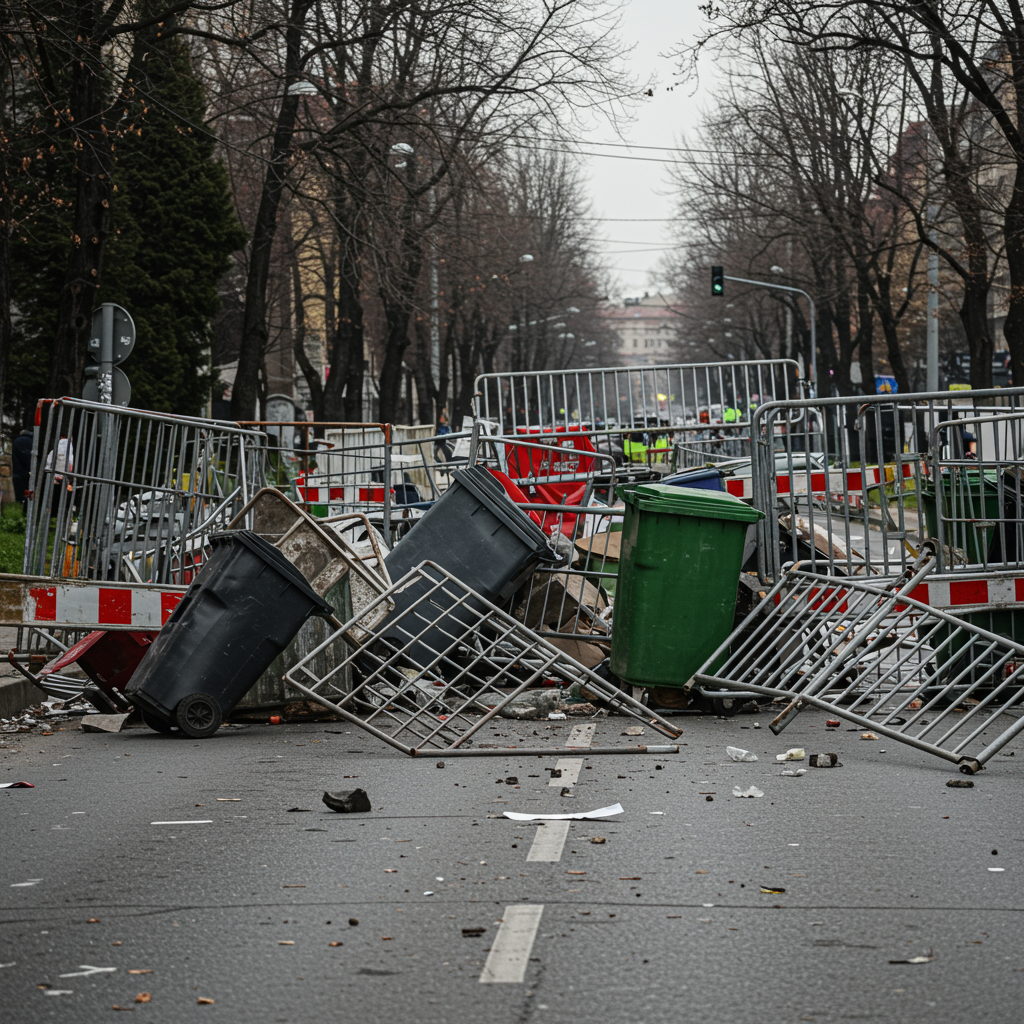The escalating hostilities between Israel and Iran have plunged the Middle East into a period of intense uncertainty, sparking global concern that ranges from fears of a catastrophic nuclear event to hopes for a less violent path forward. Predicting the precise outcome of this dangerous standoff is fraught with difficulty, particularly against the backdrop of shifting global power dynamics.
For decades, the world grew accustomed to a relatively stable international order underpinned by American hegemony. However, the erosion of this dominance, notably accelerated during the Trump presidency, has introduced unpredictable and challenging surprises onto the global stage. While countries like India have historically desired a multipolar world, seeing it as an alternative to Cold War bipolarity or post-Soviet US unipolarity, the messy form of multipolarity currently emerging, particularly under Trump’s influence, has thus far led more to chaos than to enhanced strategic flexibility for nations navigating the complex geopolitical landscape.
The Escalating Conflict and the US Shadow
The confrontation has intensified, with recent days seeing unprecedented exchanges. Israel has launched strikes targeting key Iranian sites, including facilities linked to nuclear production, such as the TESA Karaj workshop and the Tehran Research Center. In retaliation, Iran’s Islamic Revolutionary Guard has fired waves of missiles towards Israeli cities. This direct confrontation has resulted in significant casualties on both sides, with hundreds reported dead in Iran and dozens killed in Israel. The conflict’s severity even led President Trump to issue a warning to residents of Tehran to evacuate.
A major element of uncertainty revolves around potential direct US military intervention. President Trump has stated he is considering whether the US military should join Israel’s attacks, framing it as a necessary step to prevent Iran from acquiring nuclear weapons – a development he believes would threaten the “entire world.” He has emphasized that allowing Iran to possess nuclear capabilities is unacceptable. This consideration comes despite indications from US intelligence and Pentagon officials that Iran has prepared missiles capable of striking US bases in the region should America enter the fray.
Trump’s Demands and Iran’s Defiance
Adding a chilling dimension to the standoff, President Trump issued a direct and stark demand to Iran’s Supreme Leader, Ayatollah Ali Khamenei, for “unconditional surrender,” even publicly suggesting the US knew his location but would not act “yet,” warning that US patience was wearing thin.
Iran’s response has been one of firm defiance. Iranian officials, including the Supreme Leader himself, have vehemently rejected Trump’s demands and issued strong warnings to both Israel and the United States. They insist Iran does not negotiate under duress and will respond reciprocally to any threat or action. Any US military intervention, they warn, would be a “recipe for an all-out war” with “irreparable damage,” vowing that Iran will “never surrender.”
Iran’s Allies and the Risk of Regional Spillover
As Israel pressures Iran and the US weighs its options, questions arise about Iran’s network of allies and their potential involvement. Iran has cultivated an “axis of resistance” comprising regional paramilitary groups like Hezbollah in Lebanon, the Popular Mobilization Forces (PMF) in Iraq, Houthi militants in Yemen, and others. While Israel has recently dealt blows to some elements of this network, notably through attacks on Hezbollah and the changed situation in Syria, Iran retains significant influence, particularly over large and capable forces like the PMF in Iraq (estimated 200,000 fighters) and the Houthis in Yemen.
Experts warn that if the conflict escalates to an existential threat for Iran, these groups, driven by religious solidarity, could become actively involved, rapidly expanding the war regionally. Actions could include PMF targeting the 2,500 US troops stationed in Iraq or Iran itself attempting to close the strategic Strait of Hormuz, a vital global oil transit point, using ballistic missiles.
Beyond non-state actors, Iran has state allies, though their willingness for direct military support is debated. Pakistan, a regional power with nuclear capabilities, has expressed solidarity but appears focused on diplomatic de-escalation rather than military intervention. While Iran has improved ties with Gulf states like Saudi Arabia, most regional powers maintain strong US alliances making their material support for Iran unlikely. Global allies like Russia and China have condemned Israeli strikes and offered diplomatic shielding at the UN, but neither appears ready for direct military confrontation with the US and Israel, unless a US move towards outright regime change in Tehran forces a reconsideration due to their significant geopolitical interests.
The High Stakes: Outcomes and Consequences
Many experts caution against formal US entry into the conflict. They argue it would fundamentally reshape the Middle East, potentially empowering hardline elements and fracturing nascent détente efforts between Iran and Gulf states. Military action, particularly targeted strikes on facilities like Fordow, is viewed by some as unlikely to definitively halt Iran’s nuclear program, as scientists could continue their work.
Furthermore, attempts by the US and Israel to force Iran’s unconditional surrender or trigger regime change through military means carry immense risks. Instead of collapsing, the current clerical regime, whose identity is deeply rooted in resistance, could retaliate drastically if facing an existential threat. This could include not only closing the Strait of Hormuz but also resorting to prolonged, messy hybrid attacks on US and Israeli targets, potentially drawing Washington into another full-scale Middle East quagmire – a move many experts deem a “huge mistake.” Globally, such a conflict risks a major oil shock, disrupting supply chains and potentially empowering revisionist powers like Russia and China. Even within the US, the prospect of deeper intervention reveals divisions, challenging the “America First” stance among some conservatives, though significant US casualties could trigger unpredictable political backlash.
The “Big If”: Hope for Internal Change
Amidst this volatile environment, where external military options carry profound risks and uncertain outcomes, the fundamental question remains: what is the most viable path to de-escalation and stability?
For many, the significant “if” in the Israel-Iran standoff lies not in external military pressure, but in the possibility of internal change within Iran. The best-case scenario for regional stability, for global security, and indeed for countries like India navigating the chaotic multipolar world, is often posited as an internal political shift in Iran that could lead to a grudging, but ultimately peaceful, resolution with Israel. This suggests that while the world watches the external military chess game with bated breath, the true determinant of the future might reside within Iran itself.




